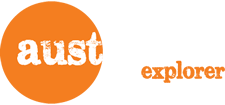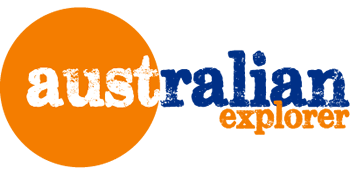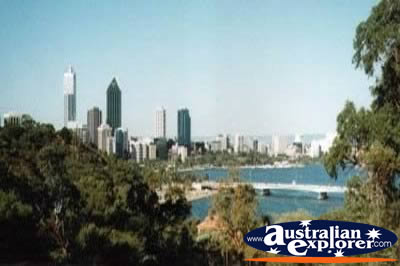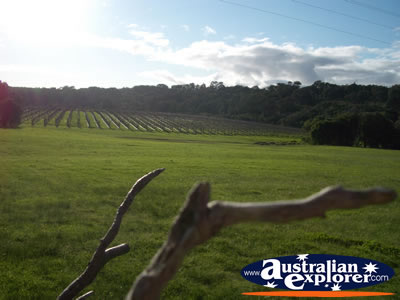Western Australia is the largest state in Australia, accounting for approximately one third of the Australian continent.
It covers 2,525,500 square kilometres. The magnificent coastline is 12,500 kilometres long, spanning 2,400 km from north to south.
Despite the huge size, the population is less than 1.8 million, 80% of which live in and around Perth (approx. 1.4 million).
The warm sunny climate of this huge Australian state, together with its beautiful white sandy beaches make this an excellent place for sun lovers. In fact, Perth enjoys more hours of sunshine than any other capital city in Australia. Of course, Western Australia offers much more to do than simply sit on the beach, swim or surf.
South of Perth is Fremantle, an attractive and popular location approximately 20 minutes drive from Perth. Further south is the pretty Margaret River wine region, located in the South West of Western Australia. This area boasts magnificent landscape and delicious local delights.
North of Perth is the Central West region, which hosts a number of fabulous locations. Avon Valley is a short drive east of Perth and home to the beautiful Spring Wildflowers. Further along the coast you will find Geraldton, Kalbarri, Denham, Carnarvon and the incredible Pinnacles Desert. Central West also features Monkey Mia, famous for it's dolphins.
Further north along the coast is the wonderful Coral Coast region and the outstanding Ningaloo Marine Park. You can join one of the fantastic eco-tourism tours from Exmouth or continue north to the Pilbara region. Port Hedland is the main port for the Pilbara region and home to several Flatback Turtles and Humpback Whales. Pilbara also offers a number of national parks including Millstream-Chichester National Park and the Karijini National Park.
The far northern area of Western Australia is made up of the Kimberley region. The region provides magnificent scenery within the various towns and national parks. Two of the main areas within the Kimberley include Broome and Derby. Kimberley is also home to a variety of other towns as well as the Devonian Reef National Park and Bungle Bungle National Park.
The rest of Western Australia is made up of the rich Outback country, covering a large amount of the Western Australia landscape. There are a selection of outback towns and mining communities, including Coolgardie and Kalgoorlie-Boulder.
Western Australia is eight hours ahead of Greenwich Mean Time but, unlike other states in Australia, does not partake in Daylight Saving.
The fastest growing industry in Western Australia is tourism with visitors from the UK, USA, Singapore and Japan making up the majority according to the Australian Bureau of Statistics. Many natural resources can be found in Western Australia including gold, iron ore, gas and minerals.
A Little History
In 1616, a Dutchman called Dirk Hartog was the first recorded European to have landed in Western Australia which was originally known as New Holland. . This area is known as the World Heritage Shark Bay region. To record his landing, Hartog, left a pewter plate.
Britain formerly claimed the land in 1826. Major Edmund Lockyer was sent from Sydney with his troops to make the claim, in the brig Amity. At King George Sound a military post was created, which is now called Albany. It was a further three years until Captain Fermantle established a colony, on May 2nd 1829, at the mouth of the Swan River. The colonisation was as a result of Captain James Stirling's favourable reports following a journey from Britain in 1826 to determine suitability for settlement.
Many people arrived at the Swan River Settlement, after many good reports in Britain. For every one shilling and sixpence they could receive one acre of land, stock or equipment. However, during the first 10 years there were shortages of money and food due to the low quality land. In 1848 the conditions, due to a shortage in workers, was considered so bad that the British Government gave assistance through convict labour.
In 1850 the first convicts arrived and were set to work building roads and buildings for the colony. These constructions can still be seen today, including the road between Perth and Albany, Government House, Perth Town Hall, Meadow Street Precinct and also Fremantle Prison.
It wasn't until the Gold Rush brought wealth and independence to Western Australia that the state began to speed its progress. Gold was first discovered in 1885 at Halls Creek, Kimberley. More gold was discovered throughout the state, however it wasn't until 1892 that the population grew to 10,000 over 10 years after a major discovery at Coolgardie and Kalgoorlie.
A Bit of Work
If you are on a working holiday you may be looking to raise some finance to supplement your travels. The following information may assist you find casual employment in Western Australia.
|
Points of Interest
Ningaloo Marine Park
The Ningaloo 'Point of Land' Reef is more accessible than the Great Barrier Reef - although a fraction of the size. Some areas are less than a 100 metres from the shore. Whale Sharks and Greenback Turtles can be seen clearly.
Western Australia Facts
* Western Australia Area: 2,532,400 square kilometres
* Western Australia Capital: Perth
WA, WA Accommodation
Top Western Australia Destinations
| Central West |
Coral Coast |
Islands |
| Kimberley |
Outback |
Perth |
| Pilbara |
South West |
Other Western Australia Destinations
PLEASE NOTE: The Western Australia travel destinations outlined above are only a small selection from the tens of thousands of Australian travel information pages available on Australian Explorer. A comprehensive list of Western Australia destinations can be found on the main Western Australia Holidays location guide.






